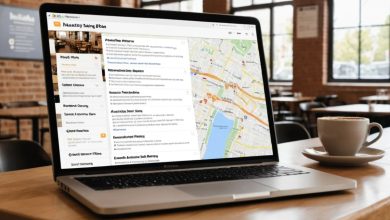Creative Networking Icebreakers That Spark Real Dialogue
Walking into a room filled with professionals can feel intimidating, and opening conversations often stalls at generic small talk. Creative icebreakers, however, break down barriers and encourage authentic dialogue from the start. In this article, you will discover why imaginative icebreakers matter, explore top formats—both in-person and virtual—and learn how to align them with your event goals, measure their impact, and iterate for even greater engagement.
Understanding the Role of Icebreakers in Networking
What Are Networking Icebreakers? (Featured Snippet Optimization)
Networking icebreakers are short, engaging activities or prompts at the beginning of an event, designed to reduce awkwardness and encourage participation. They typically focus on shared experiences or fun questions, helping attendees build rapport quickly and set a collaborative tone.
Why Creative Icebreakers Matter for Genuine Connections
Simply asking “What do you do?” often yields rote answers and stilted conversation. Creative icebreakers:
-
Lower barriers for introverts, making it easier to join discussions
-
Create memorable first impressions by avoiding overused questions
-
Encourage participants to share authentic insights rather than generic details
-
Set a positive tone for the event, signaling that dialogue and collaboration are valued
Identifying Your Networking Context and Goals
Selecting the right icebreaker depends on your specific event type:
-
Event Size: A small roundtable of 15 people requires a different approach than a conference of 200.
-
Audience Profile: Industry veterans, early-career professionals, and cross-functional teams each respond better to different prompts.
-
Objective: Are you aiming to build trust, generate leads, foster collaboration, or simply break the ice?
Top Creative Icebreaker Formats for In-Person Events
“Common Ground” Speed Sessions
In this format, attendees pair up for 2–3 minutes to discover three non-obvious things they share, such as favorite productivity tools, travel experiences, or niche hobbies. Variations include:
-
Industry-Specific Twist: “Find two tech trends you both follow.”
-
Personal Passion Focus: “Identify a creative hobby you both enjoy.”
Tutorial: Facilitating “Common Ground” in a 60-Minute Meetup
-
Divide: Ask attendees to form pairs (5 minutes).
-
Discover: Each pair lists three shared interests (10 minutes).
-
Rotate: Switch pairs 2–3 times so participants meet multiple people (30 minutes).
-
Debrief: Invite volunteers to share surprising commonalities (15 minutes).
“Two Truths and a Tech Metric”
Each participant shares two genuine achievements—such as “I launched a mobile app that reached 10,000 users”—and one fictional tech stat, for example, “Our uptime is 110%.” This format:
-
Blends credibility with lighthearted fun
-
Helps attendees remember each other’s accomplishments
Example Prompts
-
“Share two metrics you’re proud of and one you wish were true.”
-
“Tell us two real career wins and one exaggeration you’d love to achieve.”
“Human Bingo” with a Twist
Instead of generic traits, use a bingo card featuring tech- and startup-focused experiences, like “Has contributed to open-source recently,” “Invested in a YC startup,” or “Built an MVP within a month.”
| Classic Human Bingo | Creative Version (Tech-Focused) | Impact |
|---|---|---|
| “Find someone who speaks Spanish” | “Find someone who has scaled a microservice to 1M users” | Drives tech-related conversation |
| “Find someone with a pet” | “Find someone who uses AI in their product roadmap” | Spurs industry-specific dialogue |
| “Find someone who’s read this book” | “Find someone who’s contributed to open-source last month” | Connects on current, practical activities |
Tutorial: Designing Tech-Themed Bingo for a 50-Person Meetup
-
Draft 25 unique tech/entrepreneurship traits.
-
Create bingo cards with randomized grids.
-
Explain rules: Locate attendees who fit each box, then call “Bingo!”
-
Debrief by discussing the most interesting findings (10 minutes).
Virtual Icebreaker Techniques for Hybrid and Online Events
“Virtual Background Show & Tell”
Ask participants to choose a virtual background that reflects a hobby, favorite software, or dream project. Each volunteer explains its significance. Themes might include:
-
“Your most inspiring home office setup”
-
“The coding language mascot you relate to”
-
“A favorite virtual conference you attended”
Tutorial: Implementing “Show & Tell” in a 30-Minute Zoom Session
-
Instruct participants to select a background before joining.
-
Call on 5–6 volunteers to present their backgrounds (3 minutes each).
-
Facilitate a brief Q&A after each explanation (10 minutes total).
-
Bridge into the main content by linking backgrounds to discussion topics (5 minutes).
“Emoji Introduction”
Participants select three emojis that best describe their professional journey or current mood and explain why they chose them. Example sets:
-
🚀👩💻📈 (startup launch, coding, growth)
-
🔧📚🤝 (problem-solving, continuous learning, networking)
Tutorial: Running “Emoji Introduction” for a 100-Person Webinar
-
Ask in advance for attendees to pick three emojis during registration.
-
Highlight ten emoji sets at random, then have those speakers explain their choices (2 minutes each).
-
Encourage viewers to react or comment on shared emojis to foster community interaction.
“Breakout Brainstorm Roulette”
Use randomized breakout rooms to pose a quick industry-specific prompt—such as “How would you enhance UX with a $500 budget?” or “What’s one scaling challenge you faced in your startup?”
Prompt Categories
-
UX enhancements for SaaS apps
-
Strategies for scaling microservices
-
Building and engaging a developer community
Tutorial: Facilitating “Breakout Brainstorm Roulette” in 45 Minutes
-
Divide attendees into breakout rooms of 4–5, pre-assigning each group a prompt.
-
Allow 10 minutes for brainstorming, then shuffle participants randomly for a second round with a new prompt.
-
Reconvene and have one representative from each group share key ideas (15 minutes).
Aligning Icebreakers with Event Objectives
Matching Icebreakers to Networking Goals
| Goal | Recommended Icebreaker | Expected Outcome |
|---|---|---|
| Finding Tech Co-Founders | “Common Ground” Speed Sessions | Identify shared technical skills and interests |
| Showcasing Product Traction | “Two Truths and a Tech Metric” | Highlight achievements and spark curiosity |
| Fostering Collaboration | “Breakout Brainstorm Roulette” | Generate innovative ideas and teamwork |
| Encouraging Candid Dialogue | “Human Bingo” (Tech-Focused) | Reveal niche experiences and build trust |
Tutorial: Choosing the Right Icebreaker
-
Small Roundtables (10–20 people): Use “Common Ground” or “Emoji Introduction” to ensure everyone speaks.
-
Medium Meetups (30–50 people): Opt for “Two Truths and a Tech Metric” or “Human Bingo” to maintain variety.
-
Large Conferences (100+ people): Implement “Show & Tell” or multiple simultaneous “Breakout Brainstorm Roulette” sessions to handle scale.
Timing and Placement Within the Event Agenda
Effective timing ensures that energy stays high:
-
Opening: Kick off with an icebreaker to set a welcoming tone and help attendees overcome initial awkwardness.
-
Post-Keynote or Panel: Use a quick, energizing activity to re-engage participants before networking breaks.
-
Mid-Workshop: Insert a 10-minute icebreaker to refocus attention and foster camaraderie among attendees.
Tutorial: Integrating an Icebreaker into a 2-Hour Meetup
-
Opening (10 minutes): Welcome and event overview.
-
Icebreaker (15 minutes): “Common Ground Speed Sessions” to build rapport.
-
Main Content (60 minutes): Panel discussion or keynote.
-
Networking Break (20 minutes): Distribute “Human Bingo” cards for informal mingling.
-
Closing (5 minutes): Summarize key takeaways and encourage follow-up.
Measuring Icebreaker Effectiveness
Key Metrics to Track Engagement
To evaluate impact, track:
-
Participation Rate: Percentage of attendees who actively join the icebreaker.
-
Post-Event Survey Scores: Feedback on icebreaker relevance and enjoyment.
-
Number of Follow-Up Conversations: New connections made directly after the activity.
-
Social Media Mentions: Instances of attendees sharing their experience online.
Tutorial: Setting Up a Simple Post-Event Feedback Form
-
Create 3–5 survey questions: “Did the icebreaker help you meet new people?” (Yes/No), “Rate the icebreaker from 1–5,” “What did you enjoy most?”
-
Send via email or chat link immediately after the event.
-
Analyze to identify which icebreakers generated the highest engagement and positive sentiment.
Collecting Qualitative Feedback and Iterating
Beyond numbers, qualitative insights reveal nuanced improvements:
-
Focus Groups: Gather 5–10 attendees for a 20-minute discussion on what worked and what didn’t.
-
One-on-One Interviews: Speak with speakers or organizers for deeper perspectives.
-
Observation Notes: Facilitators record participant reactions, laughter, and overall energy during icebreakers.
Tutorial: Conducting a Quick Focus Group
-
Invite ten random attendees to a short feedback session.
-
Ask targeted questions: “Which icebreaker question led to the most meaningful conversation?” “How comfortable did you feel sharing?”
-
Document key takeaways and patterns—e.g., prefer shorter prompts or more time for discussion—to refine future icebreakers.
Frequently Asked Questions (FAQs)
What Makes an Icebreaker “Creative” Rather Than Generic?
A creative icebreaker strays from the standard “What’s your job?” by introducing unique prompts—such as metrics-based games or visual show-and-tell—that encourage attendees to share insights beyond their titles, sparking genuine curiosity and dialogue.
How Long Should an Icebreaker Last During a Networking Event?
Ideally, 10–20 minutes total: enough time for meaningful engagement without draining energy. For small groups (under 30), 15 minutes often suffices. In larger gatherings, break the icebreaker into multiple segments or use parallel breakout rooms to maintain momentum.
Can Icebreakers Work for Virtual and Hybrid Events Equally Well?
Absolutely. Formats like “Virtual Background Show & Tell,” “Emoji Introduction,” and “Breakout Brainstorm Roulette” adapt seamlessly to online platforms. The key is clear instructions, reliable tech (breakout rooms, chat functions), and a facilitator who keeps the pace lively.
How Do You Handle Participants Who Are Reluctant to Participate?
Encourage engagement by keeping activities low-pressure—no one “fails” at a fun prompt. Offer examples first to model participation. Pair reluctant individuals with supportive partners or smaller groups. Emphasize that sharing is optional but valued; starting as an observer can help build comfort.
Conclusion
Creative networking icebreakers transform the initial moments of an event from awkward pauses into dynamic conversations that lay the foundation for authentic connections. By choosing formats such as “Common Ground Speed Sessions,” “Two Truths and a Tech Metric,” or “Virtual Background Show & Tell,” you invite attendees to share real insights rather than surface-level small talk. Aligning icebreakers with event goals and timing—from intimate roundtables to large conferences—ensures relevance and maximum engagement. Measuring effectiveness through participation rates and feedback loops allows continuous refinement, so each meetup sparks deeper dialogue and valuable partnerships. Implement these techniques to craft memorable icebreakers that ignite genuine rapport and fuel your network’s growth.
Published on: 4 de June de 2025








